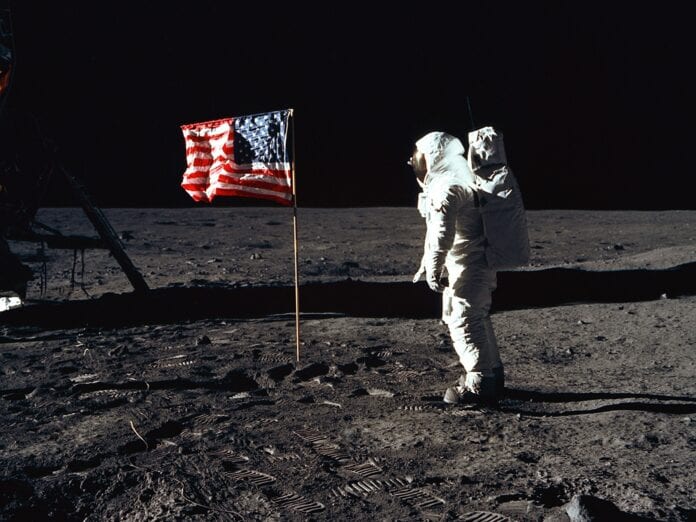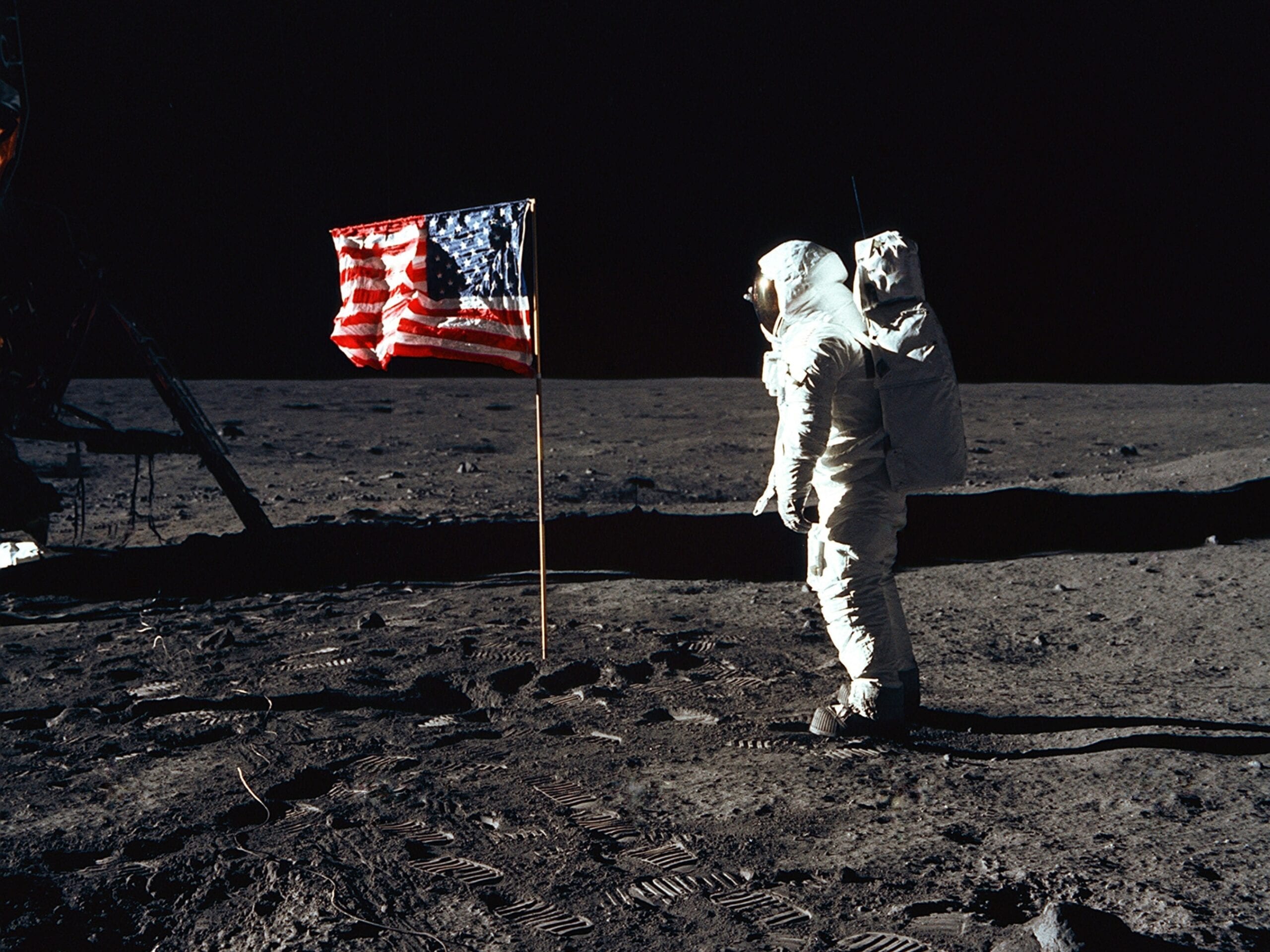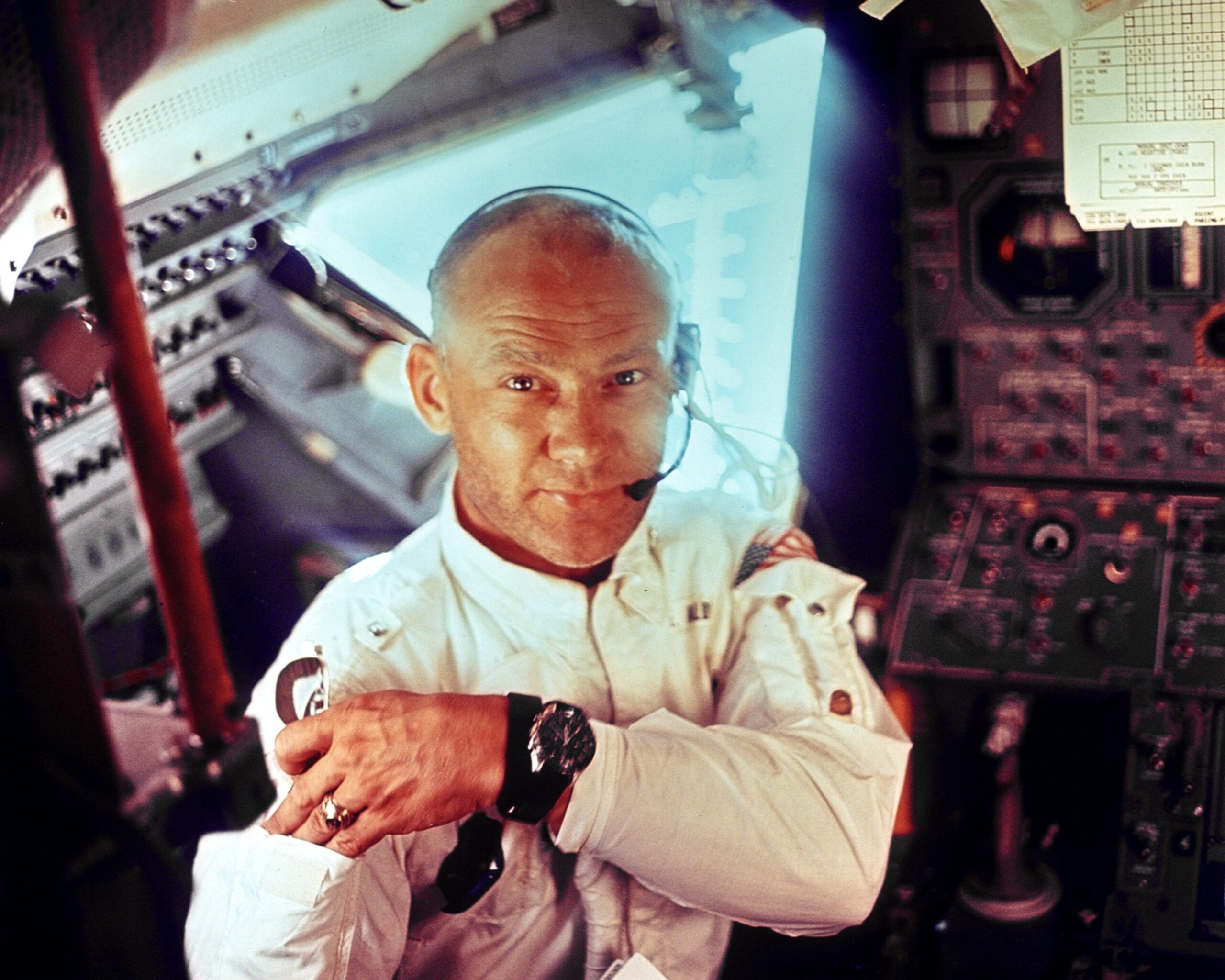It’s over half a century since Apollo 11 landed on the moon, ancient history to today’s youngsters. But as Laura Steele of education resource experts PlanBee shows, the historic mission can’t fail to enthrall them
In 1962, President Kennedy told Americans: ‘We choose to go to the Moon”.
The US and the Soviet Union had been competing in the ‘space race’ since the 1950s. For the next seven years, the US space agency, NASA, employed 400,000 people and spent $25 billion (£20 billion) on working to achieve a mission to the moon. On 16 July, 1969, after years of planning and preparation, the Apollo 11 mission was ready begin.
Neil Armstrong and two other astronauts, “Buzz” Aldrin and Michael Collins, woke up to a beautiful sunny day at Cape Kennedy in Florida. They had a breakfast of steak, scrambled eggs, toast, coffee and orange juice before travelling to the launchpad.
They climbed into the spacecraft at 6:45am, and after numerous checks, launched just under three hours later, at 9:32 am. They entered an elliptical Earth orbit just 12 minutes later.
The rest of the day went smoothly. They went to bed two hours earlier than planned, at 8:52pm. The spacecraft continued its programmed journey to the Sea of Tranquillity, their destination on the Moon. (The Sea of Tranquillity is not actually a sea – there is no water on the Moon’s surface. Early astronomers mistook the dark patches for large areas of water.)
Apollo 11 travelled around 240,000 miles in 76 hours before it entered a lunar orbit on 19 July. Armstrong and Aldrin prepared to travel to the surface of the Moon in the lunar module, Eagle while Collins remained behind in the command module, circling the Moon.
They landed on the Moon on 20 July at 8:18pm. A five-hour rest period had been scheduled after the landing, but neither astronaut thought that they would be able to sleep, so they began preparations for leaving Eagle. After six hours, Armstrong finally left the lunar module and stepped on to the Moon’s surface, making history as the first human being to walk on the Moon. As he stepped from Eagle, he uttered the following now famous words: ‘That’s one small step for man, one giant leap for mankind.’
Aldrin joined Armstrong on the surface some 20 minutes later.
They took photos of the Moon’s surface, as well as collecting soil and rock samples to take back to Earth. The astronauts planted a specially designed American flag on the surface of the Moon. A plaque was placed on the surface which said: ‘Here men from the planet Earth first set foot upon the Moon, July 1969 A.D. We came in peace for mankind.’ It also had two drawings of Earth, and included the signatures of the three astronauts and America’s President Nixon.
After being on the surface of the Moon for over 22 hours, the astronauts returned to Eagle for seven hours rest, before re-joining Collins on board the command module. They re-entered the Earth’s atmosphere on 24 July, and deployed the command module’s parachute, landing safely in the Pacific Ocean. From launch to the splash down in the ocean, the Apollo 11 mission to the Moon lasted exactly eight days, three hours, 18 minutes and 35 seconds.
10 Fascinating Facts about the Moon Landing
- The Moon is an average of 238,855 miles away from Earth (that’s the equivalent of travelling from Land’s End to John o’ Groats 273 times!).
- The Apollo 11 spacecraft was over 110 metres tall.
- Today, most mobile phones are more powerful than the Apollo 11’s computers.
- The lunar module, Eagle, was so small that there was no room for seats – Armstrong and Aldrin had to stand.
- Three new minerals were discovered on the Moon, one of which was called Armalcolite – named after Armstrong, Aldrin and Collins.
- On the Moon, gravity is only one sixth as strong as it is on Earth: this means you can jump six times higher on the Moon than you can here!
- Armstrong said that the Moon smelled like ‘wet ashes in a fireplace’.
- Black and white footage of the Moon landing was transmitted to Earth and watched by 600 million people (a fifth of the world’s population.)
- After returning to Earth, the astronauts had to spend 21 days in quarantine.
- Katherine Johnson, an African American mathematician, made the calculations that ensured the mission to the moon was possible. Her achievement paved the way for more women and ethnic minorities to make progress in this field, too.
Download these great FREE moon-related resources from PlanBee:
- Moon landing picture cards https://planbee.com/products/moon-landing-ks1-picture-cards
- Neil Armstrong word search https://planbee.com/products/neil-armstrong-ks1-word-search
- Space acrostics poem template https://planbee.com/products/space-acrostics
- Space colouring https://planbee.com/products/space-colouring-pages
- Space brain teasers https://planbee.com/products/space-brain-teasers
- Space writing frame https://planbee.com/products/space-writing-frame
- Outer space finish the picture https://planbee.com/products/outer-space-finish-the-picture
- Planet mnemonic strip https://planbee.com/products/planet-mnemonics-strip
- Solar System word search https://planbee.com/products/solar-system-word-search
Help keep news FREE for our readers
Supporting your local community newspaper/online news outlet is crucial now more than ever. If you believe in independent journalism, then consider making a valuable contribution by making a one-time or monthly donation. We operate in rural areas where providing unbiased news can be challenging. Read More About Supporting The West Wales Chronicle


























